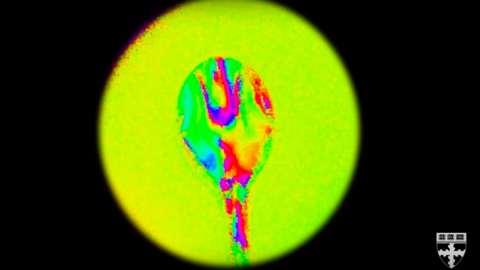Scientists create an “eye on reality” camera that sees invisible light

- Harvard researchers create a tiny camera that can see polarization.
- Seeing the invisible light can help in numerous applications, from self-driving cars to satellites.
- The scientists used nanotechnology to achieve this feat.
Scientists from Harvard University created a device that offers us a view into a normally unseen world. Their new compact polarization camera promises to achieve in one shot an imaging of the direction of vibrating light, invisible to our eyes. While some polarization cameras currently exist, they are very bulky, with expensive moving parts and limited uses.
The thumb-size Harvard camera’s creators see it as a breakthrough, with wide usefulness, from self-driving vehicles to satellites, planes, facial recognition, security and chemistry applications.
The research was carried out by a team from the Harvard John A. Paulson School of Engineering and Applied Sciences (SEAS).
Federico Capasso, professor of applied physics and senior researcher in electrical engineering at SEAS as well as senior author of the paper, called their study “game-changing for imaging.”
“Most cameras can typically only detect the intensity and color of light but can’t see polarization,” he said. “This camera is a new eye on reality, allowing us to reveal how light is reflected and transmitted by the world around us.”
Paul Chevalier, a postdoctoral fellow at SEAS and co-author of the study, explained that because polarization is a trait of light that changes when reflected from a surface, it can be helpful to reconstructing objects in 3D, allowing for better estimates of depth, texture and shape.
The team’s accomplishment was in employing metasurfaces, nanoscale structures that have interaction with light at the scale of wavelengths, shared Harvard’s press release.
Building upon new knowledge of how polarized light works, the team was able to create a metasurface that directed light and formed four images. Combined, these gave a full, pixel-deep snapshot of polarization.
Another advantage of the device – it’s just 2 centimeters in length and can be worked into existing imaging systems like cell phone cameras.
Check out how the camera works here:
You can read the new study “Matrix Fourier optics enables a compact full-Stokes polarization camera” in Science.





